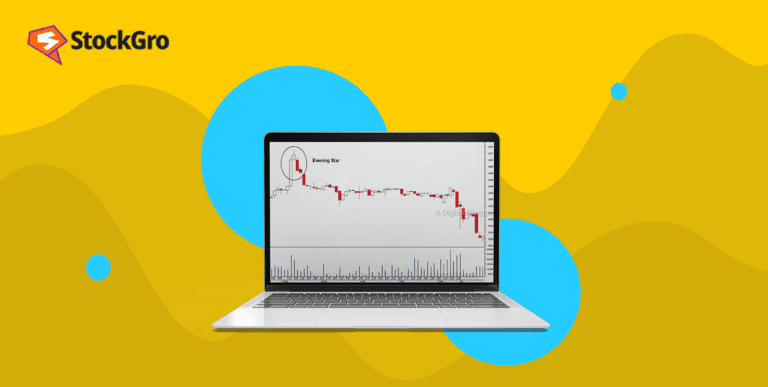
Speculation is one of the most significant concepts in the world of investments. In fact, it is right to say that some decisions rely on speculations to a large extent. While regular investments are made with the intention of earning returns, speculations involve taking high risks for high returns.
Speculation in finance is the process of trading or investing with the hope but no guarantee of making profits.
The article below deals with speculation, speculative risk, examples and how it varies from other risk forms.
You may also like: How does intraday trading work?
What is speculative risk?
Speculative risk is a type of risk where an investor makes an investment decision in which future returns are uncertain. The idea behind speculation and taking a speculative risk is the hope of high returns. Though losses are equally probable, investors still choose to speculate, considering the possibility of making huge profits.
How does speculative risk work?
An investor speculates, keeping in mind three possible outcomes.
- One, the investment turns futile – meaning it results in a situation of no loss or no profit.
- Two, the investment results in profits – This is the primary intention behind taking risks while investing. All speculations are made with an agenda of high profits, so if the investment grows as expected, the purpose of speculative risk is served.
- Three, the investment results in loss – This result is unasked for but is not unforeseen. While investors do not make investments to undergo a loss, they make investments with speculative risks, knowing they may incur losses.
Each investor has a different degree of tolerance to risk. The financial market offers a variety of products to its investors based on their risk and return capabilities.
It is a well-known theory that securities offering high returns often involve high degrees of risk. Low-risk investments are not very profitable but are usually more stable in their returns.
For investors with a high risk-reward ratio, the stock market is considered one of the most interesting avenues for investment. And, for investors who are looking for lesser exposure to risks, the bond market instruments are one of the suitable options.
The financial market offers various tools for investors to hedge their speculative risks. Hedging is a strategy used by investors to reduce the amount of potential risks.
One of the popular ways of hedging is to hold a diverse portfolio. A diverse portfolio includes investments in different kinds of assets with different risk-reward ratios. The purpose of maintaining a diverse portfolio is to benefit from one investment and nullify the effect of loss due to another investment.
A common strategy recommended by financial experts is to have a mix of debt and equity with the portion of debt being equal to the investor’s age. It works on the idea that debt investments should increase with age as the investor’s potential to take risks reduces.
Another popular hedging tool that aids investors in the equity market is an options contract.
An options contract gives the contract holder the right to fulfil or cancel the trade based on investment objectives and market conditions. The investor holding the contract has no obligation to fulfil the trade if it seems unfavourable.
A call option gives the option holder the right to execute or cancel the contract while buying an asset, and the put option gives the holder the right to execute or cancel the contract while selling an asset.
Also read: Hedging 101: Protect your investments from market surprises
Speculative Risk Example
Here is a speculative risk example to understand the concept better.
Consider Trader A, who wants to invest in shares of Company ABC. He has been tracking the stock’s performance and believes the stock’s price will rise in one month.
Given his bullish approach, he decides to invest in the shares now to benefit from the price rise later.
The share is currently trading at ₹ 150. Trader A invests ₹ 75,000 to buy 500 shares at ₹ 150 each, with the hope that the prices will increase further.
After one month, the investment can lead to three outcomes:
- There is no change in the share price. It is still at ₹150. Hence, Trader A makes no profit or loss. If he speculates a price rise again, he can hold on to the investment for a longer time. Otherwise, he can sell it off in the market. However, when investments are futile in the long term, investors will face losses due to the time value of money.
- The share price as speculated, increases to ₹165 per share. So, the trader can either sell the shares now and make a profit of ₹7,500 (₹15*500), or he can hold it for a longer period if he speculates the prices to rise further.
- The share price, opposite to his speculation, falls to ₹140 per share. So the trader is now at a loss of ₹ 5,000 (₹10*500). If he speculates the prices to go down further, he can sell the shares to avoid further losses. But, if he expects a rise in the future, he can continue to hold it.
Difference between speculative and pure risk
Pure risk and speculative risks are both significant for investors. While speculative risks are conscious choices by investors with an awareness of the possible loss, pure risks are not consciously chosen by investors.
Pure risks are beyond the control of investors, and the outcome is always a loss or no loss, but there is no possibility of gain.
Natural calamities are examples of pure risks. They do not result in any gain. The impact is always negative but can be negligible at times and severe at other times causing deaths, economic downfall, etc.
Also read: Understanding risk parity in portfolio management
Bottomline
It must be clear with the example that speculation is one of the significant ways of investing. However, speculations should not be baseless. It requires investors to apply their skills while speculating and use the fundamental and technical tools available to analyse the performance of securities. The knowledge of speculation and hedging is crucial for investors in the financial market.

